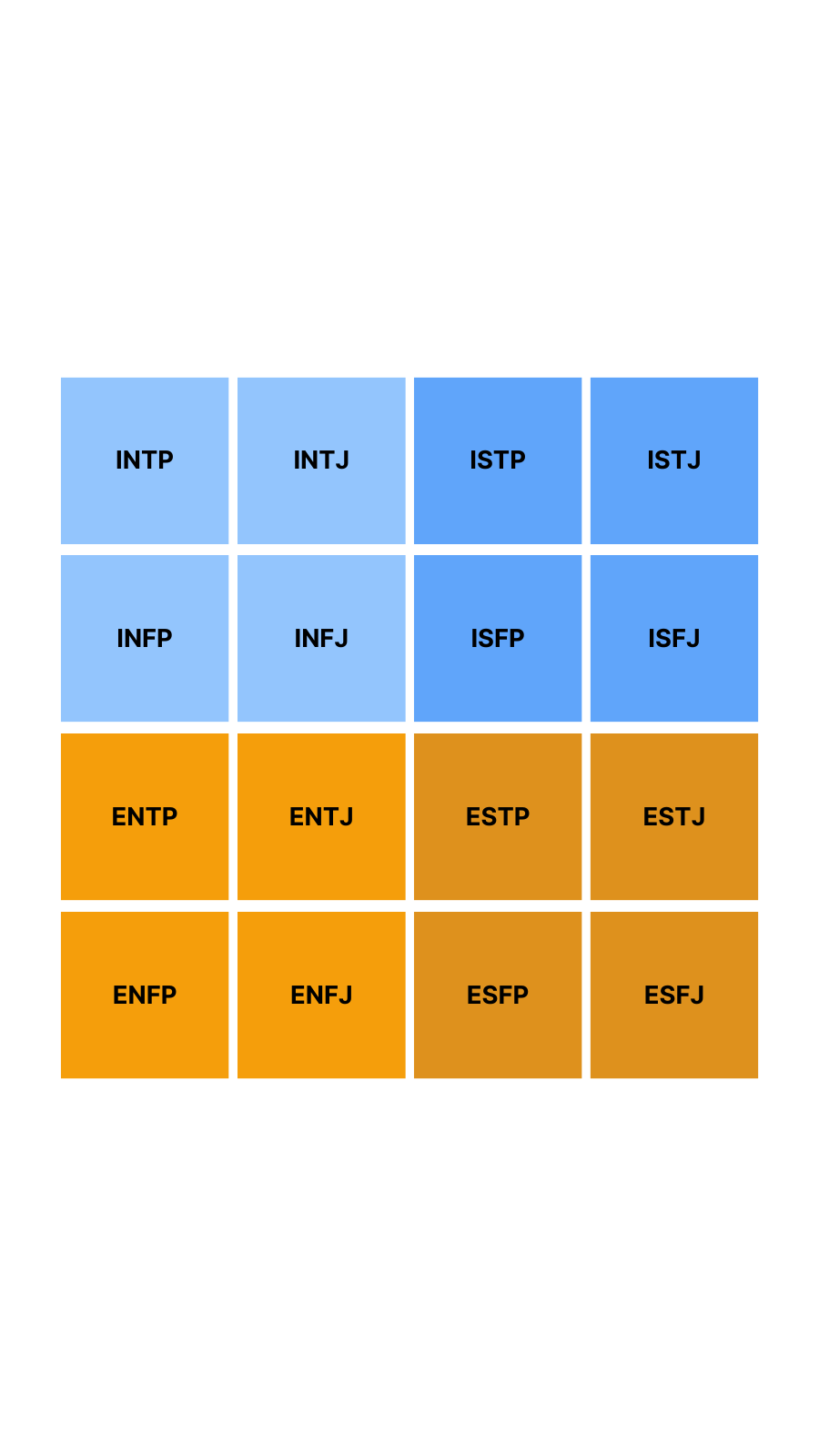Uninhibited, flamboyant, and friendly, ESFPs often feel energized by being in the spotlight.
Reading time: 5 minutes

Gregory Park, Ph.D.
Author
This series of short articles touches on several aspects of the ESFP personality type.
You can jump straight to any section by clicking the links below, or keep reading to learn about the definition of the ESFP personality type.
In the popular Myers-Briggs or 16-personalities tradition, all personalities belong to one of 16 types. Each type is defined by preferences across these four dimensions:
Here’s how to understand the ESFP’s place on all four dimensions:

Do you know your personality type?
See how your personality compares to all 16 types with TraitLab's comprehensive assessment.
ESFPs have an extraverted attitude or orientation.
ESFPs tend to focus more on the objective world of people and their external environment, while an introverted attitude leads to a greater focus on the inner, subjective world of concepts and ideas.
ESFPs prefer to use the cognitive function of sensing over intuition when taking in information about the world.
This dimension, sensing vs. intuition, is known as the perceiving function in MBTI theory.
Sensing refers to perceiving and gathering information directly through the sensory system. People who prefer sensing trust their five senses to directly observe the world, and they can be more skeptical of more intuitive, theoretical approaches to learning and understanding.
ESFPs prefer using their feeling function when judging information and assessing values and needs among people.
This dimension, thinking vs. feeling, is known as the judging function in MBTI theory.
By prefering feeling over thinking as their judging function, ESFPs lean on their acute understanding of others’ emotions, desires, and perceptions.
As a perceiving type, ESFPs tend to present their perceiving function of sensing to the external world.
Because they present their favored perceiving function of sensing externally, other people see ESFPs as highly observant realists who focus on the facts and the present moment.
The four-letter types from MBTI theory encode each type’s attitudes and preferred cognitive functions.
For the ESFP,
From this, we can determine how the ESFP prefers the four cognitive functions of intuition, sensing, thinking, and feeling:
Why? ESFPs have an extraverted attitude (E) and a perceiving attitude (P), so they present their perceiving function (S) to the external world.
Like all extraverted types, ESFPs prefer an orientation to the outer world, so they present their strongest cognitive function (S) to the outer world and other people.
ESFPs’ secondary function, feeling, is the one they rely on more heavily in their inner, subjective world. This counterbalances their extraverted primary function.
In MBTI theory, the tertiary function is the opposite of the secondary function, which for ESFPs is thinking.
Lastly, the inferior function is the opposite of the primary function, which for ESFPs is intuition. The inferior function in all personality types is the least developed function.
According to the MBTI, somewhere between 2% and 12% of all people will be classified as an ESFP.
For comparisons between ESFPs and other types from the 16 Personality typology, visit any of the type pairings below: